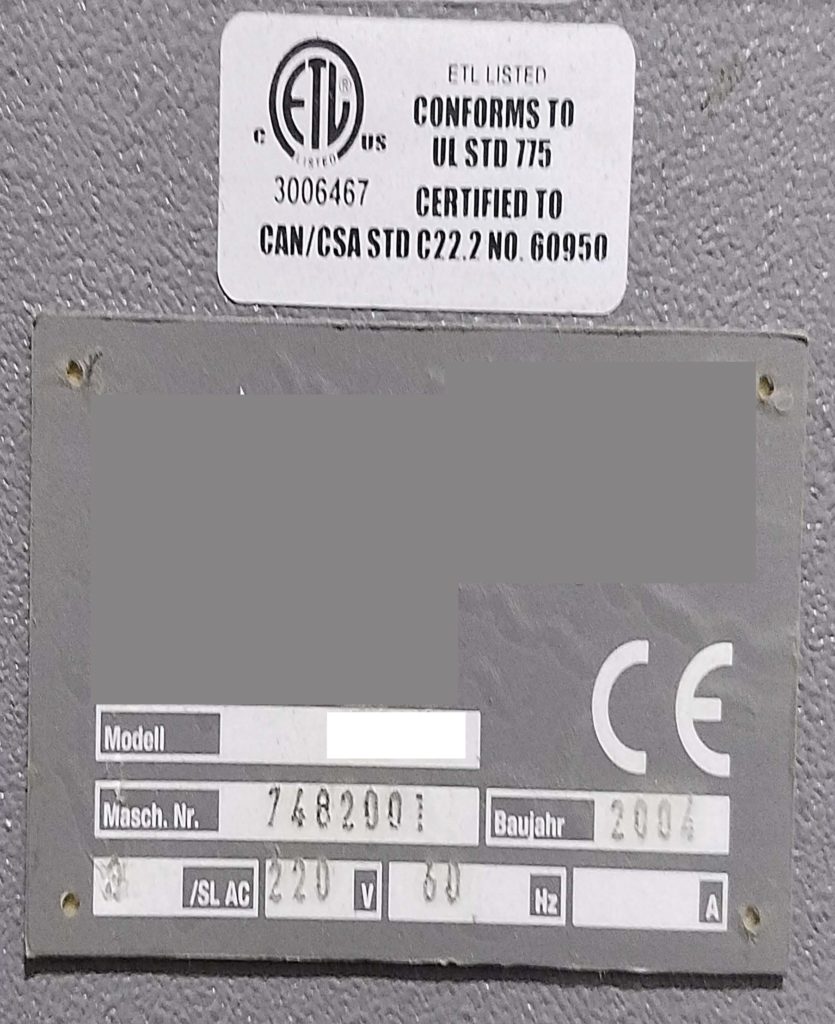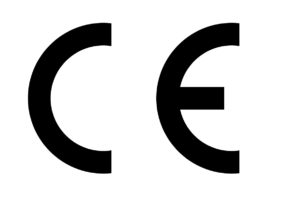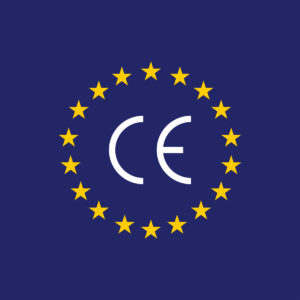Two little letters, CE. Perhaps you have seen those two letters on a machine nameplate or some other equipment. What is the meaning behind those two stylized letters and how does it drive the design of safer machinery? Let’s take a closer look.
If you go back to the 1980’s, The Treaty On The Functioning Of The European Union paved the way for consolidated machine safety standards. This was accomplished through what has become known as the Machinery Directive, or the COUNCIL DIRECTIVE of 14 June 1989 on the approximation of the laws of the Member States relating to machinery.
This original directive contains language such as:
…Whereas Member States are responsible for ensuring the health and safety on their territory of their people and, where appropriate, of domestic animals and goods and, in particular, of workers notably in relation to the risks arising out of the use of machinery;…
…Whereas the social cost of the large number of accidents caused directly by the use of machinery can be reduced by inherently safe design and construction of machinery and by proper installations and maintenance;…
Obviously, protecting the citizens (and sometimes their pets!) of the respective member states regarding their interaction with machinery is a central goal of the Machinery Directive. The current version of the Machinery Directive is 2009/127/EC and incorporates many enhancements and clarifications.
At the heart of the Machinery Directive is ANNEX I, the “Essential health and safety requirements relating to the design and construction of machinery”. General Principles 1 states:
The manufacturer of machinery or his authorized representative must ensure that a risk assessment is carried out in order to determine the health and safety requirements which apply to the machinery. The machinery must then be designed and constructed taking into account the results of the risk assessment.
By the iterative process of risk assessment and risk reduction referred to above, the manufacturer or his authorized representative shall:
-determine the limits of the machinery, which include the intended use and any reasonably foreseeable misuse thereof,
-identify the hazards that can be generated by the machinery and the associated hazardous situations,
-estimate the risks, taking into account the severity of the possible injury or damage to health and probability of its occurrence,
-evaluate the risks, with a view to determining whether risk reduction is required, in accordance with the objective of this Directive,
-eliminate the hazards or reduce the risks associated with these hazards by application of protective measures, in the order of priority established in section 1.1.2(b).
Here the Machine Directive is clear that an iterative risk reduction process must be utilized to make the machine as safe as possible. The hazard(s) identified should be eliminated if possible or the risk associated with the identified hazard should be reduced.
Section 1.1.2(b) further states:
In selecting the most appropriate methods, the manufacturer or his authorized representative must apply the following principles, in the order given:
-eliminate or reduce the risks as far as possible (inherently safe machinery design and construction),
-take the necessary protection measures in relation to risks that cannot be eliminated,
-inform users of residual risks due to any shortcomings of the protective measures adopted, indicate whether any particular training is required and specify any need to provide personal protective equipment.
Here, written in the binding EU Machinery Directive, is the tried and true Hierarchy of Design. It begins with a risk assessment incorporating the intended and reasonably foreseeable uses of the machine. Also crucial to the risk assessment is the severity of the injury and the likelihood of the injury occurring. The hazards identified should be eliminated through good engineering design if possible. If this is not possible, then the risk should be minimized by the appropriate protective measure. After protective measures are applied, the risk should then be reevaluated and “residual risks”, those that could not be eliminated or properly protected against, should be documented for information purposes for the end user.

CE mark on machinery
So, what should the two letters CE mean to you? It should mean that the machinery designed after 1995 and bearing the CE mark has been designed to meet a threshold of safety established by the European Union Machinery Directive. The machine should have had its intended uses identified and communicated in written form. Reasonably foreseeable misuse should have been identified along with the intended use. An iterative risk assessment should have been performed with hazards eliminated and risks reduced via appropriate measures considering the severity of the injury and likelihood of occurrence. A reevaluation should have occurred after the application of the hazard elimination and risk reduction means were applied and residual risks identified. These residual risks should then be addressed if possible and if not, communicated in written form.
A technical file documenting the design approaches taken to meet the requirements of the Machinery Directive should be drafted and maintained for the machinery. This file is to be made available on request to verify compliance with the Machinery Directive. A Declaration of Conformity should then be drafted and signed by an authorized representative of the company certifying that the machine complies with the Machinery Directive. The Declaration of Conformity should accompany the machine when it is delivered to the owner.
What are the appropriate measures that eliminate hazards and reduce risks? The Machinery Directive addresses these further and we will dig into these more in Part II of this blog.
Chad Jones, PE, CMSE, CFEI has a Bachelor of Science in Mechanical Engineering from Clemson University. Chad has over 20 years of engineering experience including mechanical, process, and manufacturing engineering. This work has included equipment design, machine safeguarding, cost estimating and safety compliance. Chad also has over 10 years of commercial, industrial, and residential HVAC and plumbing design experience. Chad is a Certified Fire and Explosion Investigator and IFSAC certified Firefighter II in Greenwood County, South Carolina.





